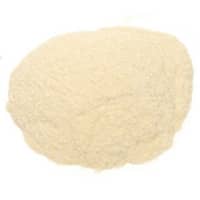Pectin is plant based, and consists of a complex set of polysaccharides. The amount, structure and chemical composition of pectin differs among plants, within a plant over time, and in various parts of a plant.
Healing Properties
- Antiproliferative
- Citrus Pectin fragments such as, rhamnogalacturonan, exhibit high anti-proliferation activities against human colon adenocarcinoma (colon cancer) cells.[1]
- Prebiotic: Promotes increase of beneficial bacteria in gut microbiota.
- Reduces blood cholesterol levels.
Disease / Symptom Treatment
- Cancer
- Colon Adenocarcinoma (colon cancer): Citrus Pectin fragments such as, rhamnogalacturonan, inhibit cancer cell proliferation.[1:1]
- Hypercholesterolemia: Helps reduce high levels of cholesterol in the blood.
Title: Active pectin fragments of high in vitro Antiproliferative activities toward human colon adenocarcinoma cells: Rhamnogalacturonan II
Author(s): Lianzhong Ai, Yun-Chin Chung, Syuan-Yu Lin, Kuan-Ching Lee, Phoency F.-H. Laiab, Yongjun Xia, Guangqiang Wang, Steve W.Cui
Institution(s): School of Medical Instrument and Food Engineering, Shanghai Engineering Research Centre of Food Microbiology, University of Shanghai for Science and Technology, Shanghai, 200093, PR China; Department of Food and Nutrition, Providence University, Taichung, 43301, Taiwan; MediFood Research Center, Conpowon International Co., New Taipei, 25170, Taiwan; Guelph Food Research Centre, Agriculture and Agri-Food Canada, Guelph, Ontario, N1G 5C9, Canada
Publication: Food Hydrocolloids
Date: 9 May 2018
Abstract: This study was to identify active pectin fragments of high in vitro anti-proliferation activities against human colon adenocarcinoma Caco-2 cells, using various pectin fragment preparations dominant with rhamnogalacturonan I (RG-I), rhamnogalacturonan II (RG-II), and galacturonic acid oligomers (GAOS). The samples were prepared from citrus high and low methoxy pectins (HPE and LPE) by endo-α-D-(1,4)-polygalacturonase action coupling with a green process as ultrafiltration (membrane molecular weight cut off > 10k, 1k-10k, and < 1k, giving fragment preparations I, II, and III, respectively). It is indicated that, in the fragment preparations HPE-I, II, and III, the molecular fractions HPE-F1 (RG-I), HPE-F2 (RG-II), and HPE-F3 (GAOS) showed an averaged Mw = 26.7k, 3.4k, and 0.3k, respectively, notably higher than their LPE counterparts. All fragment preparations exhibited concentration-dependent, inhibition effects on Caco-2 cells, where HPE-II (RG-II-domain) revealed an interesting inhibition effect, significantly higher than those did HPE-I (RG-I domain) and HPE-III (GAOS). The HPE-F2 (RG-II) was elucidated and found of IR = 88% at 1.0 mg/mL and half-inhibition concentration (IC50) = 0.12 mg/mL, doubling the effect of HPE-F1 (RG-I) (IR = 45% at 1.0 mg/mL). Conclusively, citrus RG-II fragment showed a promisingly high anti-Caco-2 activity, significantly higher than did RG-I and GAOS, possibly attributed to its special branched structure and low molecular size.
Link: https://doi.org/10.1016/j.foodhyd.2018.05.017
Citations: ↩︎ ↩︎
